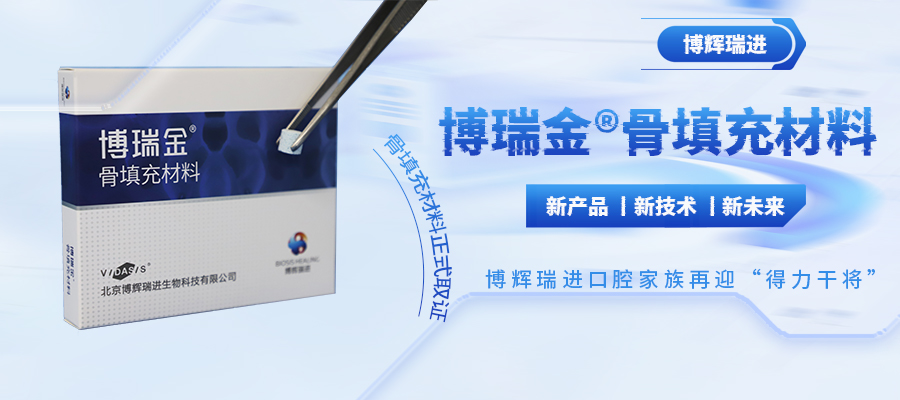Biosis Healing SIS biomaterial with independent intellectual property rights, the main components include collagen type I and III, various growth factors (TGF-β, VEGF and FGF, etc.) and fibronectin (FN).
FN is a glycoprotein in the form of a disulfide-linked dimer (220ku) that is secreted by a variety of cells, including fibroblasts, myocytes, and endothelial cells. FN exhibits adhesion and migration properties with a variety of cells, including fibroblasts and endothelial cells, and has the reputation of "Extracellular Adhesive".
FN plays a key role in embryogenesis, wound healing and hemostasis. The content of FN in the acellular matrix directly affects the biological activity of SIS. In this paper, VIDASIS from Biosis Healing and Biodesign from COOK, United States, are selected to be quantitatively detected and studied on the content of FN.
The article was published in the "Journal of Biology" in Feb. 2018. The following are excerpts.
Note: The detection method mentioned in this article has applied for patent protection, patent number ZL201710214434.5.

Figure: Cover of the Journal of Biology in Feb. 2018
FN has high binding properties to collagen, and exists in the state of binding with collagen in the extracellular matrix. Traditional methods are difficult to effectively detect FN in acellular matrix. In order to make FN change from bound state to free state and be further enzymatically hydrolyzed, the release method of FN was first studied in the experiment.
Figure 1 shows dynamic curve of SIS residue in degradation process by different enzymatic hydrolysis methods. After the static enzymatic hydrolysis method was used to add collagenase, the residual amount of SIS in the solution gradually decreased, and the degradation rate was only 60% after 24 hours of enzymatic hydrolysis. After 3 days of degradation, 10% of the SIS remained undegraded, and the residual amount became stable after 4 days. Residual flocs that cannot be degraded (Figure 1). The results of amino acid analysis showed that there was almost no hydroxyproline in the residue, indicating that the collagen component in SIS was effectively degraded.
However, the process of degrading SIS by this method takes a long time, and there are problems such as susceptible bacteria, enzyme inactivation and high random degradation rate. In order to improve the efficiency of enzymatic hydrolysis, the experiment tried the method of enzymolysis in batches, that is, the solid-liquid separation was carried out after a certain period of degradation, and the sediment was re-enzymatically hydrolyzed. The residual amount of SIS changed significantly in the first three degradation processes. The residual amount was 70% in the first liquid change, 50% in the second liquid change, and about 30% in the third liquid change (Fig. 1). The enzymatic hydrolysis of SIS was relatively complete after the process was repeated 5 times. In order to minimize protein loss in the samples, the number of degradations in the experiment was increased to 6 times during enzymolysis in batches.

Figure 1: Changes in SIS residue in enzymolysis in batches and static enzymolysis
Mass spectrometry-based detection method - FN signature peptide screening
FN was treated with trypsin (AR) to produce a large number of low molecular weight peptides. The peptides were compared by BLAST in the experiment. The peptides detected only in the porcine-derived FN database were characteristic peptides of porcine-derived FN. The mass spectrum information of peptide after enzymolysis was searched in the database with SEQUEST software, and the peptide filtering parameters were Xcorr>1.5 (single charge), Xcorr>2.0 (single charge), and Deltacn>0.1, then the peptides were considered to be positive result. The ion chromatogram of characteristic peptides was extracted from the mass spectrogram of HPLC-MS analysis. Low-concentration samples can be extracted with high abundance, and the signal-to-noise ratio S/N>10, which is suitable for use as characteristic peptides.
The porcine-derived FN enzymolysis by trypsin was subjected to full-scan analysis by ion trap mass spectrometry (LCQ) to obtain the total ion chromatogram of the porcine-derived FN digested polypeptides (Figure 2). BLAST multiple sequence alignment was used to find that a certain number of characteristic peptides existed in porcine-derived FN, and then Bioworks software was used to search the peptide mass spectrometry information of the degraded porcine-derived FN, and the peptide fragments with positive results were screened. From the library results, the peptide SSPVVIDASTAIDAPSNLR was selected as the characteristic peptide of porcine-derived FN, and its abundance and secondary fragment matching degree were high. Figures 3 and 4 are the extracted ion chromatogram (including the primary mass spectrogram) and the secondary mass spectrogram of the polypeptide, respectively, and the secondary fragment ions have a high degree of matching with the theoretical value. Therefore, this polypeptide can be selected as a characteristic polypeptide for identification and quantitative detection of porcine-derived FN types.

Figure 2: Total ion chromatogram of porcine-derived FN enzymatic hydrolysate

Figure 3: Extraction ion chromatogram and primary mass spectrogram of characteristic polypeptide

Figure 4: secondary mass spectrogram of characteristic polypeptide
Take porcine-derived FN standard solution of different concentrations treated by denaturing enzymolysis, inject 50 μL sequentially from low concentration to high concentration, analyze according to HPLC-MS quantitative detection conditions, monitor target ion m/z=957.5, obtain different concentrations extraction ion chromatogram of porcine-derived FN characteristic polypeptide (Figure 5), according to the peak area of the extracted ion chromatogram of the selected characteristic polypeptide as the ordinate, and the concentration of porcine-derived FN standard product as the abscissa to perform linear regression (Figure 6), the regression equation is: y= 4109.5x - 12.82(R2=0.995), the linear relationship between the two is good in the concentration range of 0.0024~0.048g/L.

Figure 5 Extraction ion chromatogram of characteristic polypeptides of porcine-derived FN at different concentrations

Figure 6: Relation curve of porcine-derived FN standard concentration and signal intensity
Result of FN content detection in SIS
Weigh 50 mg of SIS (VIDASIS), add collagenase and divide it into 5 times of enzymatic hydrolysis, combine the 5 supernatant of enzymatic hydrolysis, freeze-dry to obtain 123 mg of lyophilized product (including salts in the extract). 4mg freeze-dried product was redissolved and enzymolized with trypsin. The enzymatic hydrolysis product was analyzed according to the HPLC-MS quantitative detection method. According to the peak area of the extracted ion current chromatographic peak of the characteristic polypeptide of FN, the concentration of FN in the sample solution was 0.007 mg/mL, then The content of FN in SIS (VIDASIS) was 0.43%. Using the same assay method, the content of FN in SIS (Biodesign) was determined to be 0.17%.
Precision and stability verification
The same sample was diluted to different concentrations, respectively 2.4, 4.8, 9.6, 19.2, 48, 96 and 192 μg/mL, and its fibronectin content was detected by HPLC-MS. According to the relationship between the concentration gradient and the peak area, determine the concentration range in which the peak area increases linearly (Figure 7). The experimental results show that this method has a high degree of linearity.

Figure 7: Linear range of FN mass spectrometry detection method
Accurately measure 100 μL of the FN standard, analyze it according to quantitative HPLC-MS conditions, and repeat the injection 3 times. The results (Figure 8) show that the RSD of the peak area relative deviation of the characteristic polypeptides in the FN standard is 1.31%, indicating that the precision of this method is good.

Figure 8: Precision analysis of FN mass spectrometry detection method
The samples were stored at -20℃, and the samples were measured three times by FULL SCAN at 10, 20, and 30 days respectively, and their peak areas were 3.82x108, 3.45x108, and 3.16x108. The peak area of the samples stored for 30 days decreased slightly, indicating that the method has high stability.
Conclusion
As an important part of extracellular matrix, FN has many biologically active functions. The content of FN in SIS acellular matrix material was quantitatively detected by Enzymolysis in batches and LC/MS. The collagenase enzymatic hydrolysis scheme of SIS is optimized, which eliminates the disadvantages of long time and low efficiency. The collagenase enzymatic hydrolysis time is reduced from 96h to 6h, which greatly improves the enzymatic hydrolysis efficiency. In the experiment, the characteristic polypeptide obtained by FN by Trypsin-specific enzymatic hydrolysis was SSPVVIDASTAIDAPSNLR. HPLC-MS was used to quantitatively detect this characteristic polypeptide in FN, and the content of FN in SIS was accurately obtained. This method is simple and suitable for the detection of FN in tissues.
The results indicated that the contents of FN in the VIDASISTM and Biodesign® decellularized materials were 0.43% and 0.17%, respectively. The content of fibronectin in the SIS biomaterial is better than that of the COOK SIS material.
博瑞金® Oral Biological Graft
The SIS material with independent intellectual property rights of Biosis Healing has the advantages of good biocompatibility, promotion of tissue regeneration and repair, accelerated angiogenesis, and resistance to infection. It is widely used in the repair and reconstruction of tendons, dura mater, abdominal wall, skin, oral cavity and other tissues.
博瑞金® Oral Biological Graft, made from SIS material, is a powerful guarantee for perfect soft tissue repair and efficient osteogenesis. The product is designed with a patented technical structure. After being implanted into the damaged area of the oral cavity, it can effectively play a protective role as a barrier, realize the rapid ingrowth of blood vessels, and induce tissue repair and regeneration.
Compared with inert tissue-derived materials such as dermis on the market, 博瑞金® Oral Biological Graft has good softness, fit and hydrophilicity, which can better fit the defect area and facilitate surgical operations; is rich in bioactive substances which can promote cell attachment and tissue regeneration; has excellent tolerance to infection, can reduce the chance of wound infection.

Figure: SIS material 博瑞金® Oral Biological Graft
博瑞金® Oral Biological Graft has been on the market, and the national investment promotion has been officially launched. For more product details, please contact us.
010-61252660-892











版权所有®2019BIOSISHEALING